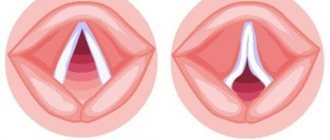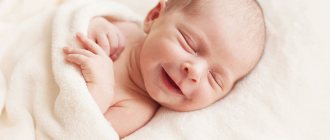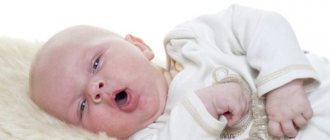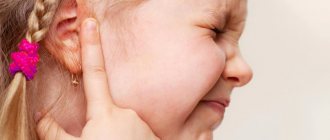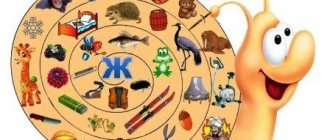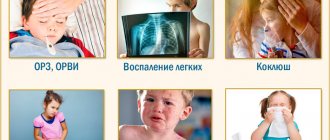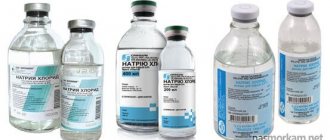Home Children Health
Are there people on Earth who have never suffered from a cough or runny nose? Statistics show that every person gets sick 2-3 times a year, and in children, colds are a frequent visitor. If you enjoy ice cream in the summer, breathe in the winter air, and catch a virus, a child can catch the disease at any time of the year.
Resistance to diseases and the state of immunity do not depend on age or season. There is a certain algorithm of actions that should be taken when a runny nose and cough are detected in a child. A timely reaction will help avoid severe consequences and long-term treatment.
Finding the cause of a child's condition without medical education is difficult, but possible. Parents sometimes do not see the difference between influenza and ARVI, let alone more severe diseases. Cough with runny nose is a strange symptom and can be caused by different sources.
A runny nose and cough are often accompanied by general malaise: weakness, headache. Should we immediately sound the alarm and rush to the doctor, or should we get by with quick treatment at home? Let's figure it out.
First, let's determine the source of the cough and runny nose.
ARVI ranks first among provocateurs. This is a group of diseases with similar symptoms. It spreads through airborne droplets and affects children's respiratory organs. Finding exactly the virus that caused the illness is problematic; there are more than 200 of them.
Other symptoms of ARVI besides cough and runny nose:
- sneezing;
- swelling of the mucous membranes;
- hard breath;
- muscle and headache;
- temperature;
- general weakness.
The flu adds severe headaches and a sore throat to the list. Rhinitis does not cause a high fever and does not put the child to bed, but it can be a signal for examination for measles and diphtheria. Laryngitis is characterized by a rough cough, hoarseness, the larynx becomes covered with crusts and mucus. Bronchitis provokes a deep, dry or wet cough.
Sore throat requires serious treatment; it can cause heart complications. It is identified by acute inflammation in the throat area - a white or gray coating. Pharyngitis, tracheitis, bronchiolitis, sinusitis, sinusitis and, most importantly, pneumonia, also require medical supervision.
The next pests are bacteria. Tests show the presence of a bacterial infection; it is expressed by severe pain, green snot and sputum. But yellow-green snot indicates the release of dead immune cells. A runny nose and cough can be a reaction to pollen, pet dander, and other irritants. Signs of allergies include severe lacrimation, itching in the nose and eyes.
General rules for treating a child for cough and runny nose
If a child is sick for the first 3 days and no serious symptoms are detected, we will help him cope with his illness in simple ways. This is enough to overcome a common ARVI and prevent complications from a more serious illness.
We organize suitable conditions for the child:
- The optimal air temperature in the room is 18-22 degrees.
- We regularly ventilate the room.
- We do wet cleaning 2-3 times a day. We remember that viruses and bacteria like to live in dust.
- We humidify the air the child inhales with a humidifier or a simple wet towel on a radiator.
- We do not force the child to eat, but we insist on drinking plenty of any liquids: tea, fruit drinks, mineral water, compotes.
If the child feels well, we go for walks more often. We try to prevent the mucus in the nose from drying out and crusts from forming. The ideal assistant for this is a weak salt solution, which can be purchased at a pharmacy (saline) or made independently (1 teaspoon of salt per liter of water). It is absolutely harmless, it is permissible to drop 2-4 drops into each nasal passage at least an hour later.
It is appropriate to add an oil solution to the salt solution - Vaseline, olive oil, tocopherol, retinol or “Ectericide”. It will coat the mucous membranes and prevent drying. The oily liquid must be combined with hydrochloric liquid; the former can be dripped less frequently - every 2 hours.
Do not use vasoconstrictor drops - Naphthyzin, Nazol - to get rid of a common viral runny nose. They first alleviate the condition, and then worsen it, dry out the mucous membranes and cause complications in the medical history. They are appropriate for allergic rhinitis and otitis media.
Get tested for allergies. If a child’s rhinitis is caused precisely by external irritants, remove the source, start taking antihistamines and vasoconstrictor drops. The correct therapy should be prescribed by a pediatrician. Drops should not be used more than 3 times a day or longer than a week.
Let’s summarize the entire comprehensive approach to combating the runny nose:
- Drink plenty of any liquids that the child does not refuse - water, tea, compote, diluted juices.
- Give your son or daughter vitamins. In some cases, it is permissible to use antiviral drugs that stimulate the production of interferon and help fight viruses.
- Create all the conditions for recovery, let the child breathe clean and cool air.
- Moisten the nasal passages with a saline and oil solution, clear them of mucus.
- Apply an aroma lamp with esters - clove, eucalyptus, cinnamon, mint oil, diluted in a base of apricot, peach or jojoba oil. You can anoint the wings of the nose and the bridge of the nose with the mixture if the baby does not resist. An old proven method is the “Star” balm.
The mucous discharge from the nose should flow. Use an aspirator (nozzle suction device) or cotton swabs if you have a baby. It’s better to have irritation from a handkerchief under the nose than for a child to need long-term treatment in a hospital setting. If you follow these simple recommendations, a runny nose and cough (as a result of snot) will go away on their own in just 3 days.
Cough in a baby
To combat cough caused by snot in infants, you can use only the most harmless methods yourself:
- add honey to your diet;
- instill saline solution into the nose;
- use a humidifier;
- increase your child's fluid intake;
- keep the baby's head in an elevated position.
Honey can be consumed by children aged one year and older, starting with 1/8 of a teaspoon dissolved in a cup of tea. This product helps with expectoration and reduces sore throat. Since honey often causes allergies, after its first use you should carefully monitor the baby’s well-being.
A special device for humidifying the air will help reduce air dryness. As a result, the natural state of the nasal mucosa will be restored and the intensity of the cough will noticeably decrease.
The additional amount of fluid will help reduce the viscosity of mucus, helping to cough it up, and will also help improve the child's general condition. You can consume a variety of natural drinks:
- water;
- breast milk;
- animal milk;
- dried fruit compotes.
Before giving the drink to children, you should ensure that it has cooled to an acceptable temperature. Babies under six months of age should drink only mother's milk or special nutritional formulas. When coughing, such children should be put to the chest more often. Elevating the baby's head makes breathing easier.
If your runny nose doesn’t go away, let’s tackle it thoroughly
What remedies will help get rid of a runny nose? You can drip breast milk into your baby's nose several times a day. Doctors deny the effectiveness of this method, but they have cured more than one generation. Try it, it definitely won't do any harm.
Older children are helped by drops from available products - onions, potatoes, vegetable oil, honey. Squeeze the juice from the vegetables, dilute it with honey and butter. You will need 1 tsp of ingredients, take a tablespoon of vegetable oil. This mixture should not be used if the child is allergic to honey. Check the reaction - drop a little honey on the inside of your forearm and wait half an hour. No redness - no allergies.
Another helper is Kalanchoe. The juice of the plant contains disinfectants and anti-inflammatory substances. It is better to dilute freshly squeezed liquid with boiled water in a 1:1 ratio so as not to damage the delicate mucous membrane of a child’s nose. From 7-8 years old you can drip pure juice.
What should I do if I have a similar but different question?
Medical portal 03online.com
provides medical consultations via correspondence with doctors on the website. Here you get answers from real practitioners in your field. Currently, on the site you can get advice in 47 areas: allergist, venereologist, gastroenterologist, hematologist, geneticist, gynecologist, homeopath, dermatologist, pediatric gynecologist, pediatric neurologist, pediatric urologist, pediatric surgeon, pediatric endocrinologist, nutritionist, immunologist, infectious disease specialist, cardiologist , cosmetologist, speech therapist, ENT specialist, mammologist, medical lawyer, narcologist, neurologist, neurosurgeon, nephrologist, oncologist, oncourologist, orthopedic traumatologist, ophthalmologist, pediatrician, plastic surgeon, proctologist, psychiatrist, psychologist, pulmonologist, rheumatologist, radiologist, sexologist-andrologist , dentist, urologist, pharmacist, herbalist, phlebologist, surgeon, endocrinologist.
We answer 96.09% of questions.
Massage and gymnastics - we will help a child without drugs
Another way to alleviate a child’s condition is acupuncture massage of points on the face. How to do it? Using light, smooth massaging movements, move down from the bridge of the nose from the eyebrows along the wings to the base of the nose and massage the side surfaces of the tip a little more. We act symmetrically on both sides and clockwise.
Breathing exercises will also come in handy. There are different techniques, but even the simplest of them improve blood circulation in the nasopharynx and relieve swelling. It is enough to do breathing exercises 1-2 times a day. It will be an excellent addition to the main treatment.
When a runny nose requires emergency medical attention:
- If the snot does not go away for 10 days or more, you need a consultation and testing for the presence of a bacterial infection. In this case, the doctor will prescribe antibiotics.
- If a child complains of an unbearable headache or discomfort in the ears (for very young children, you can press the tragus to determine whether the ear hurts or not). Contact an ENT specialist to rule out the presence of sinusitis or otitis media. These symptoms may indicate inflammation of the meninges (meningitis).
- If you notice blood in the mucus secreted and it did not get there from the wounds around the nose, plus the child looks too lethargic - these signs indicate diphtheria.
Don't put antibiotics in your nose. They cause an allergic reaction in the body. Later, if antibiotic treatment is needed for a serious illness, they will be useless and sometimes dangerous. The popular “Dioxidin” is completely toxic to children.
How to treat?
Pediatricians warn: treatment of cough begins with finding out its root cause. If the provoking factor is nasal secretion, you should not take medications.
This applies to both cough and cough medications. In this case, they are ineffective and sometimes cause harm.
For children under 1 year of age, nasal mucus is removed using a rubber bulb. Rinse with saline or saline solution.
It is recommended to bury the nose with children's drops Otrivin, which contains xylometazoline, or Aquamaris. This product is based on sea water from the Adriatic Sea and resembles saline solution. For patients under 2 years of age, it is better to use drops.
The substance xylometazoline is included in the list of vital drugs, but has contraindications, so the instructions for Otrivin must be studied before use. Indicated for sinusitis, rhinitis, acute respiratory infections.
Folk remedies are also allowed. These include mixtures of aloe juice and honey, beet or onion juice. But sometimes they cause dryness, burning, and an allergic reaction.
Important! When asked by parents whether it is necessary to treat an independent runny nose, pediatricians answer that no. It is better to create conditions for its termination
Important Antiangin lozenges: instructions for use, composition of lozenges, reviews
Let's move on to coughing - how to get rid of it and is it always necessary to do this?
A cough is the same immune response as a runny nose. By coughing, the child tries to clear the airways of irritants. Most often, this same irritant is snot. And the first way to get rid of a cough is to cure a runny nose using the methods described above.
Any disease of the respiratory tract is accompanied by copious production of sputum. The body removes accumulated mucus by coughing. The parents’ task is not to dry out the mucus and to do everything so that it leaves the child’s body more easily. And the first remedies are plenty of fluids and cool air.
It is strictly forbidden to give a child cough suppressants without a doctor’s prescription.
Pay attention to accompanying symptoms:
- Fever. When a cough and runny nose is accompanied by a temperature no higher than 37.5 degrees, this indicates a cold and does not cause danger. If the thermometer strip runs above 38 degrees, the body is fighting a virus or bacterial infection. Remember that the optimal temperature for the death of viruses is 38-39 degrees; if it rises, you must take an antipyretic. Paracetamol will help check the severity of the disease: if it brings down the temperature, in most cases the disease is mild.
- Labored breathing. It occurs when there is a spasm of the natural air passages and indicates a serious disease of the bronchi, pneumonia.
- Hoarseness in the voice. A bad symptom that requires observation by a doctor. Appears with sore throat, laryngitis, pharyngitis.
If the sputum is very thick, transparent and viscous, you should think about an asthmatic cough. There is no temperature. If the cough is persistent, the sputum is dark and streaked with blood, you need to be examined for cancer.
Why does mucus in the nose cause coughing?
Often, parents of a sick child try to conduct independent therapy, believing that they are well versed in self-diagnosis.
Thus, the presence of a cough does not cause them to doubt that it comes from the bronchi, so the respiratory system must be persistently treated. After a few days, parents note a deterioration in the child’s condition, despite active therapy with the best drugs, the price of which is impressive, and the instructions convince of a speedy recovery. When you see a pediatrician, you hear a verdict that the cough is caused by snot. How can this be?
Cough is a reflex reaction to an irritant, which is most often of an inflammatory or mechanical nature. In this way, the body clears the airways so that air can move freely.
The human nasopharynx is designed in such a way that some of the mucus flows into the throat. The discharge is a foreign body, so the baby immediately reflexively tries to cough it up.
Visit to the pediatrician
Folk cough remedies for children
Warm baths with a weak solution of mustard powder will also help eliminate coughing. After the bath, children's feet are rubbed with a warming fatty ointment, and after a couple of minutes socks are put on. You can fill the bathtub with hot water, add a pack of soda and/or salt, and let the child sit in the room and breathe in the steam.
The following recipes also give good results:
- Radish + honey: cut out the center of the vegetable, pour honey into it and leave for 24 hours.
- Onion juice + honey in equal proportions.
- Warm milk mixed with honey and a spoonful of mineral water.
- Half a kilo of walnuts + 300 g of honey + juice of four lemons + teaspoon of aloe juice.
The dosage for small children under 4-5 years old is a teaspoon, from 5 to 10 years old you can give a dessert spoon, from 10 years old - a tablespoon. You need to use the product 2-3 times a day. It is not advisable to treat a child under 3 years of age with folk remedies containing honey; they can cause an allergic reaction.
Time-tested compresses quickly treat a child’s cough:
- Warm boiled potatoes with a few drops of iodine and a spoonful of vegetable oil. The mixture is placed on parchment or plain paper, covered with foil or a bag. The place where the compress is applied is the chest and back. The duration of the procedure is until it cools down.
- A piece of wool soaked in salt water. The amount of salt is a tablespoon per shallow container of water. The compress is placed on the chest and back and left overnight.
- Grind a whole head of garlic with 100 grams of fat or oil. Apply the mixture to your child's feet before bedtime.
Any compress requires wrapping the child. Thermal effects on the chest and feet help to liquefy mucus and promote its rapid removal from the lungs.
You can also ease coughing with percussion massage. The child should be placed on his stomach and tapped on the back with fingers or the edge of the palm for 1-2 minutes. The actions should be strong enough, but do not hurt the baby. After the massage, return the patient to an upright position and ask him to cough. The procedure is carried out up to 5 times.
Do not warm up or massage at high temperatures.
How to tell if your child has postnasal drip syndrome
Postnasal drip is accompanied by the flow of viscous secretions from the nasal cavity or nasopharynx. Muconasal mucus flows down the back of the throat. When the secretion gets on the mucous membrane of the throat, it provokes a cough. Moreover, cough in children is usually observed at night and in the morning immediately after sleep.
At night, when the child’s body is in a horizontal position, night secretions accumulate in the area of the vocal cords, irritate the reflexogenic zones, and cause coughing. During the day, being in an upright position, the child almost does not cough. He reflexively swallows the viscous mass; it does not have time to get on the vocal folds and cause irritation.
Postnasal drip syndrome is characterized by a dry cough at night. No wheezing is observed in children. For many patients, cough is the only symptom. A morning cough in children is often accompanied by vomiting due to coughing up a large amount of mucus. The color of the secretion is yellow or yellow-brown.
Inhalations are a quick way to relieve a child from coughing
Modern parents are lucky: they have special devices for inhalation at their disposal - nebulizers and inhalers. They will also help cope with cough and runny nose.
The inhaler turns liquid into vapor containing large particles. Use it to moisten the upper respiratory tract and clear phlegm. For inhalation, you can use saline solution, mineral water, herbal decoctions, and oil solutions.
The nebulizer acts as an aerosol, therefore it is used for diseases of the lower respiratory tract. It's better not to use it yourself. The nebulizer is usually loaded with quite serious medications, which are purchased at the pharmacy with a doctor’s prescription.
If you don’t have a special device yet, you can do an old procedure - inhalation with potatoes. Make sure that the steam is not too hot and does not burn the child's airways. The benefits of any inhalation are obvious - they make sputum “wet” and help it leave the child’s body along with viruses and bacteria.
Carry out such procedures infrequently. If the child is small, his cough impulse is not yet fully formed and there is a risk of suffocation from the large amount of mucus secreted.
Doctor Komarovsky's opinion
Many parents are interested in knowing how Komarovsky proposes to treat the cough reflex that appears due to excess mucus in the nasopharynx. In his opinion, self-medication has no place when coughing attacks occur at night. A sick child must be shown to a doctor. Therapy is selected individually depending on the established diagnosis.
According to Dr. Komarovsky, before visiting a doctor, you can alleviate the condition if you ventilate the room where the baby sleeps before going to bed and do a wet cleaning in it. It is advisable to place a pillow under your head so that the mucus can drain out. It should not accumulate in the nasopharynx or sinuses. Drinking plenty of fluids will be helpful. Children over 3 years old can be given a glass of warm milk at night, in which ¼ teaspoon of butter is dissolved. Thanks to this method, it is possible to avoid drying out of the larynx and oral cavity at night.
source
Treatment of children's cough with medications
Herbal and synthetic mucolytics (“Pertussin”, “Lazolvan”, “Mukaltin”, “Ambroxol”), phlegm-thinning drugs, and syrups containing soda will help ease the child’s well-being with a common cold cough. These drugs provoke the production of sputum and improve its elimination. The composition of the medicines usually includes extracts from licorice root, coltsfoot, and plantain.
There is a second group of medications that block the cough reflex. They are prescribed for dry cough, which appears not only due to viral and bacterial infections, but also due to allergies or neurology. For children, such a drug must be selected by a doctor. It is important to use a mixture or tablets that do not contain harmful components and are not addictive.
Under no circumstances should you give your child drugs from both groups at the same time. By liquefying mucus and muffling the cough, you do not cure, but provoke complications.
How to calm a bad cough at night
These methods will help you feel better and sleep well until the morning. Some parents, without a doctor’s testimony, are at a loss and do not understand how to carry out treatment or at least alleviate the condition. So, you should call an ambulance during a coughing attack if it is accompanied by the following signs:
- strong increase in temperature;
- whistling when coughing;
- coughing up blood;
- cough with vomiting;
- complaints of severe pain;
- appearance of rashes.
If there are no symptoms listed above, then you can use the tips described above and wait until the morning. The famous pediatrician Komarovsky says that cough is the body’s defense, so it is necessary to establish its cause and treat it first. But at the same time, do not forget to relieve coughing, which causes severe discomfort. This is very easy to do by drinking plenty of fluids and frequently airing the rooms.
We will do everything to prevent cough and runny nose.
The main preventive measure is strengthening the immune system. An immunogram will help you find out about specific problems in this area. But even without it, there is something to do: hardening, proper nutrition, regular and long walks in the fresh air, sufficient time for sleep and rest. If there is an allergy, analyze what the child reacts to with a runny nose and cough, remove the irritating factor.
The use of some traditional and official medicine will help to avoid the disease: wearing a gauze bandage during the period of virus activity, applying antiviral ointments to the nasal passages, inhaling essential oils.

